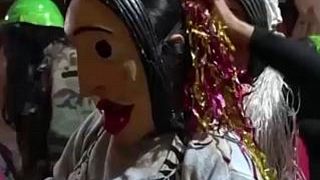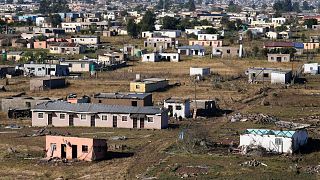South Africa
The global demand for seafood has led to innovative approaches to aquaculture, and abalone farming is emerging as a sustainable solution. In a recent interview, Bertus van Oordt, CEO of HIK Abalone Farm, shed light on the natural characteristics of their abalone and the focus on sustainable farming practices.
According to van Oordt, the abalone cultivated at HIK Abalone Farm possesses robust qualities, making them resilient and capable of growing to a significant size. The primary goal of the farm is to optimize growth rates, ensuring a quicker maturation process, increased yield, and meeting the diverse preferences of consumers in terms of taste and color.
The emphasis on sustainability is not limited to South Africa, where HIK Abalone Farm is located. Raphael Fisher, a fisherman, highlighted the importance of such aquaculture initiatives in sustaining local communities. For individuals like Fisher, whose livelihood depends on successful harvests, the transition to alternative work would be challenging. He pointed out that the success of abalone farming provides not only economic stability for individuals in places like Hawston but also a viable option for those seeking alternative employment in the absence of traditional opportunities.
Wendy Chan, Managing Director of Lamma Rainbow Seafood Restaurant, expressed confidence in the sustainability of abalone sourced from South Africa. While Chan may not have in-depth knowledge of the South African abalone industry, she acknowledged the stable supply and pricing of abalone from the region. Her observation of regular abalone sizes indicated a well-managed farming process, where consistency is a key factor.
The global perspective on abalone farming is increasingly positive, with a growing recognition of its potential to meet the demands of seafood enthusiasts while minimizing the impact on wild populations.
-Hawston's Abalone Dilemma: Navigating Troubled Waters Between Tradition and Sustainability-
Nearly every house in Hawston has a boat in its yard, sometimes two.
It takes a moment to realize many are out of action, grass sprouting through holes in hulls that haven't touched water for years. They are relics of another time, when people fished for their livelihood and the ocean provided more than enough.
Few places have been so impacted by the South African abalone, a curious fist-sized sea snail that is a highly prized morsel in East Asia and the unwitting instigator of 30 years of trouble for Hawston and many other fishing communities along Africa's southern coast. Abalone here was abundant and especially tasty, yet the demand largely put the village and its traditional fishers out of business, or made them criminals overnight.
Raphael Fisher was born into fishing, as just about everyone was in Hawston. He grew up diving for the abalone that South Africans call perlemoen — or, affectionately, ‘perly’ — in the rocky coves. He was learning to work his father’s boat in his late teens. Every boy wanted to be a perly fisher in Hawston, he said. It was the thing.
-Illegal Poaching and its Consequences-
But over the last three decades, poachers have swept in and swept up every snail they could find — every sackful a fat payday. They can get $50 a kilogram. It's reduced the endangered South African abalone to unprecedented low levels, wildlife groups say.
At first, the South African government banned abalone fishing completely. Now, strict quotas give Fisher and other small operators lucky enough to get them the rights to catch 120 kilograms a year. Hardly anything.
It’s why a different poaching — not for big profits, but to put food on the table — has also ensnared so many traditional fishers up and down this coast. Fisher faced that temptation.
“There’s no other work in Hawston, so what other option would I take? I would also take a wetsuit and go dive, because I’ve got a family to feed,” he said.
A 2022 report by the Global Initiative Against Transnational Organized Crime estimated the illegal trade heading to the hub of Hong Kong was worth nearly $1 billion between 2000 and 2016, and growing.
The total legal abalone fishing quota in South Africa is set at a maximum of 100 metric tons a year. Hong Kong is importing between 2,000-3,000 metric tons of illegal South African abalone a year, the report estimated. Some is moved on to other big markets in China, Japan and Taiwan.
Organized crime and turf battles over illegal abalone that are sometimes marked by brutal gang killings have overwhelmed South African coastal communities. Thousands of poor young men have been drawn in as foot soldiers.
Hawston and its troubles are likely unknown in Hong Kong, where the high-class Forum restaurant offers cooked South African abalone at $190 a can for customers to take away. Abalone is more than a delicious treat for millions of Chinese, said Wendy Chan, managing director at the Lamma Rainbow, a local seafood restaurant on Hong Kong's Lamma Island.
“Ancient emperors were particularly fond of it,” Chan said. “Abalone is a symbol of wealth and prestige.”
Chan also rates South African abalone highly, as so many do, with its rich taste and slightly chewy texture.
-Challenges and the Way Forward-
The International Union for Conservation of Nature says nearly half of all abalone shellfish species around the world are threatened with extinction, many affected by pollution and climate change and part of the larger story of devastation of marine wildlife.
The demand has spurred an alternative to wild abalone - farmed abalone. HIK Abalone has a total of around 13 million abalone at any one time at their two south coast farms.
Abalone as far as the eye can see — from tiny specks to as big as your hand — in rows and rows of open-top tanks. None have felt the ocean or a rock. Here, they cruise surprisingly quickly under black plastic cones they have for underwater hiding places. They are bred, fed and set to be killed at the farm to be shipped, dried or canned, to Hong Kong, a few exported live for high-end customers.
Farms are tinkering with the abalone life cycle by selective breeding to get them to grow to a size they can be sold and eaten as fast as possible, said HIK CEO Bertus van Oordt.
But the farms that have sprouted up have no role in conservation. Van Oordt said he would like to do something, but it's unclear what effect the tank-bred abalone may have in the wild. Van Oordt said he is also unwilling to put abalone in the sea to fatten the supply for poaching.
“If the government comes up with a plan so we can protect what we put back in, we'll be in,” van Oordt said. “We'll give the abalone for free.”
Officially, authorities are sticking to fishing quotas for now, but there are signs of change after a government-led meeting of all players early this year, said Markus Burgener, a senior program coordinator at TRAFFIC. It was “the most positive development I’ve seen for years and years,” Burgener said.
The key, Burgener said, must be involving communities like Hawston instead of shutting them out.












Go to video
African gut study reveals urbanization threatens microbial diversity
01:54
South Africa's independent mechanics join forces to compete with big companies
01:48
South Africa launches vaccination drive to combat foot-and-mouth disease outbreak
01:00
Pix of the Day: June 19, 2025
01:23
Hero's welcome for South African men's cricket team